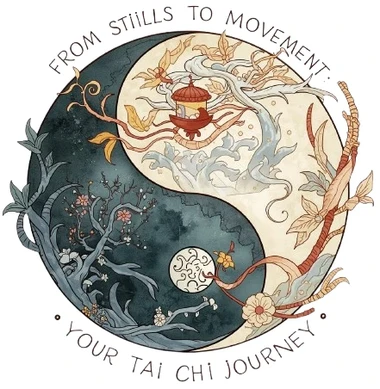The Shaolin Split: One Name, Two Completely Different Legends
Here’s a secret that changes how you see Chinese kung fu forever: There isn’t one Shaolin Temple.
There are two.
Well, kind of.
For years, even at Tai Chi Wuji, we talked about "Shaolin" as this single, mythical birthplace of all martial arts.
But the deeper we delved into the history and philosophy, the clearer it became. The story of Shaolin is a tale of two siblings, born from the same mother but shaped by vastly different worlds.
One is the famous, official, rock-star temple of the north. The other is the mysterious, almost-ghostly network of monasteries in the south. And their rivalry? It’s the reason we have the classic "Northern Leg vs. Southern Fist" divide.
So, let's unpack this incredible story.
Get ready for imperial intrigue, secret rebel monks, and the raw, practical reasons why kung fu looks so different across China.
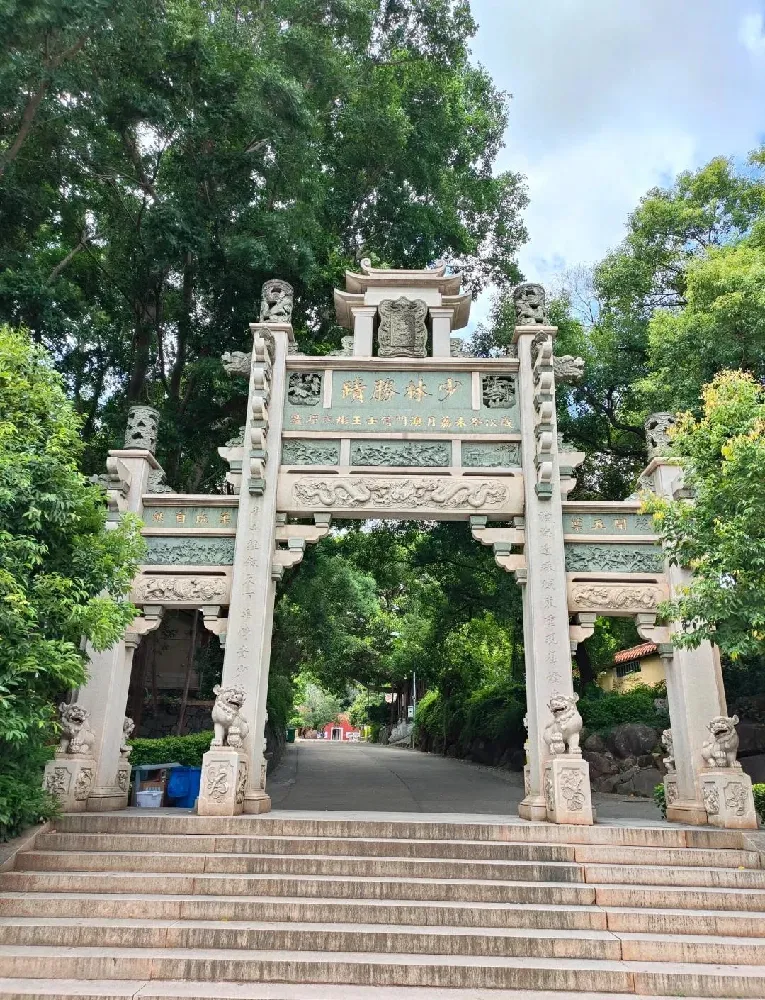
Meet the North: The Emperor's Temple
If Shaolin were a family, the North Shaolin Temple would be the famous, well-documented firstborn son.
Its story is carved in stone and backed by emperors.
The Undisputed Ancestral Home: Songshan Shaolin
Let's get one thing straight. When people say "the" Shaolin Temple, this is it.
- The Origin Story: Founded in 495 AD! An emperor set it up for a meditation master from India. It was always a place for deep, spiritual work.
- The Legend (with Truth in it): You know the "13 Monk Warriors saving the Tang Prince" story? The Hollywood version is wild, but the core is true. The monks did help in a real war. The reward? The emperor gave them land and, crucially, the right to have their own soldier-monks. This was a game-changer.
- Walkable History: Visit today, and you can still see the stone tablet where that emperor said "thank you." You can see the deep holes worn into the stone floor of the Thousand Buddha Hall—from generations of monks practicing their stances in the exact same spot. This isn't just history; it's physical, touchable legacy.
From our perspective at Tai Chi Wuji, what's fascinating here is the foundation of "Chan Wu Yi Ti"—the unity of Zen (Chan) and martial arts. The stillness of meditation and the explosive power of kung fu weren't separate practices.
They were two sides of the same coin. This philosophy of balancing internal mind and external body is something we see as absolutely central to all Chinese martial arts, from the powerful strikes of Shaolin to the flowing movements of Tai Chi.
The Imperial Branch: Jixian North Shaolin
Wait, there's a second North Temple? Yes! And its story is just as cool.
The original Jixian North Shaolin Temple in Tianjin started as another monastery. But in 1315, a brilliant Shaolin abbot named Fuyu saw the bigger picture. He set up a network of temples to protect Shaolin knowledge. He specifically named the Jixian branch "North Shaolin."
Why? Simple: Politics and proximity. It was close to the capital, Beijing. This made it a strategic hub.
Its claim to fame? It became the emperor's favorite kung fu getaway. Emperors Kangxi and Qianlong visited constantly. Qianlong even left a calligraphy plaque praising the "divine fun" of its Zen and martial arts. Imagine that—the most powerful man in China hanging out with monks, discussing philosophy and watching kung fu demonstrations. This was the "official," approved face of Shaolin.
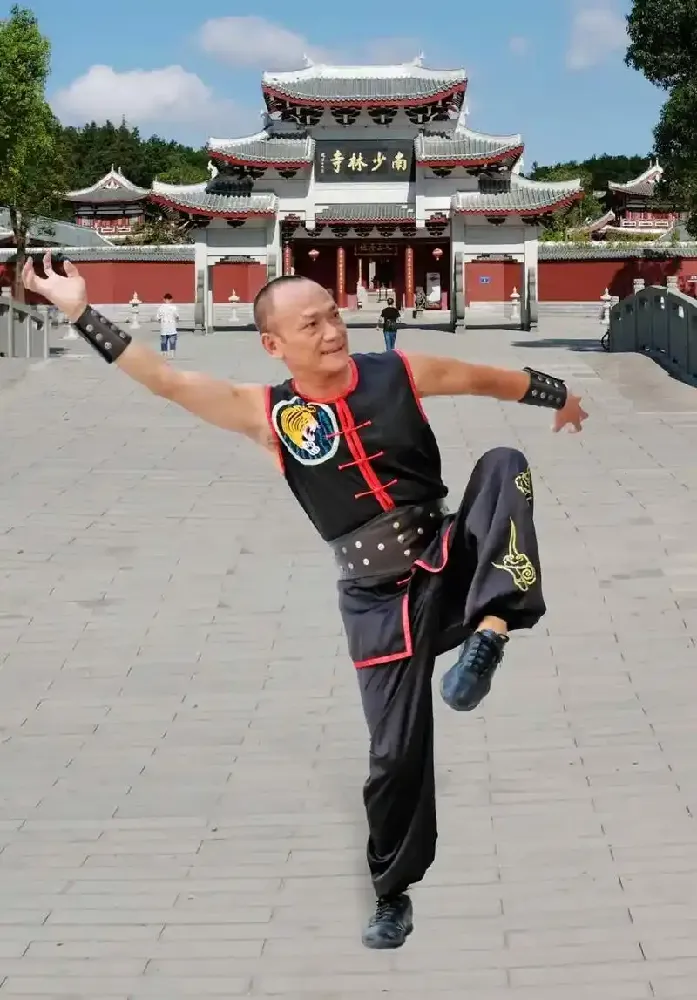
The Mystery of the South: The People's Temple
Now, let's head south. To the steamy, mountainous coasts of Fujian province. Here, the story gets hazy, exciting, and straight out of an adventure movie.
So, Did South Shaolin Even Exist?
- Short answer: Yes. The idea that it was just a myth is itself a myth.
- Longer answer: Scholars agree that a powerful Shaolin martial tradition definitely existed in Fujian. But it wasn't necessarily one single temple with a giant "South Shaolin" sign out front. It was more like a rebel alliance of monasteries that all practiced a similar, devastatingly effective style of kung fu.
The evidence?
- Official Records: Ming Dynasty history books record "monk-soldiers from Fujian" fighting Japanese pirates.
- Local Legends: Stories and clan genealogies talk about Shaolin masters spreading their art.
- The Smoking Gun: In the 1990s, archaeologists at a site in Fuqing dug up roof tiles and bowls with the clearest inscription possible: "少林院用" — "For the use of Shaolin Yuan." That's as direct as it gets.
The Epic Downfall: Why It's So Hard to Find
So why can't we just Google Maps it? Here's the dramatic reason: The South Shaolin temples were burned to the ground.
They became hubs for anti-Qing Dynasty rebellion. The "Heaven and Earth Society" secret societies were often linked to them. So, the government wiped them out. This purge was so thorough that it scattered the monks, burned the records, and erased the South Shaolin from official history.
This is why the legacy of the South is so powerful. It's the story of the underdog, the rebel, the people's fighter. It’s a spirit that still resonates deeply in the martial arts world today.
In the next part, we'll break down exactly how this North/South split created two completely different ways of fighting. Get ready to see how geography literally shaped kung fu!
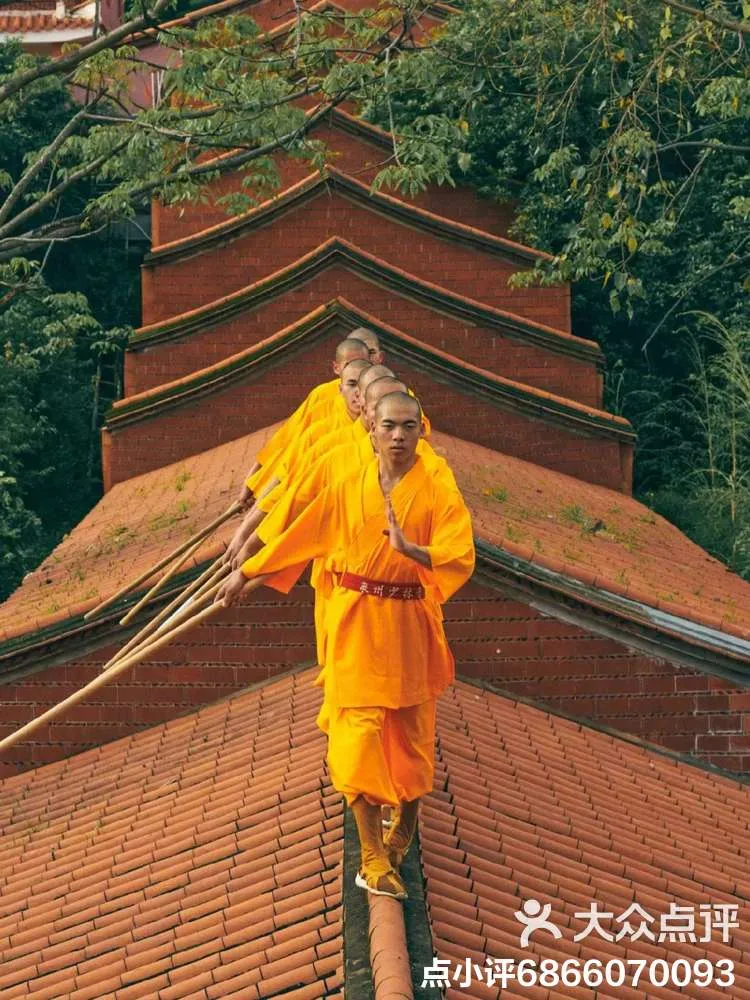
Fist vs. Foot: How Earth and Empire Forged Two Kung Fu Styles
Let's get practical. Why does this North vs. South Shaolin history even matter?
Because it explains everything about how they fought. Geography isn't just a location; it's a training manual.
Think about it. Your environment dictates your survival. The vast, open plains of the North demanded one kind of warfare.
The tight, mountainous alleyways of the South demanded another. The martial arts that developed in these regions weren't just different techniques; they were different answers to the question: "What is the most effective way to win here?"
So, let's break down this legendary "Northern Leg vs. Southern Fist" dichotomy. It’s not just a cute saying—it’s a principle born from the very soil of China.
North Shaolin Kung Fu: The Power of the Open Plain
Imagine you're a monk on the flat, yellow earth of Northern China. Your enemy is on horseback or coming at you from a distance. What do you do?
You fight like the North.
The Philosophy: "Grand Opening, Grand Closing"
This is the core of Northern style. In Chinese, it's called "Da Kai Da He" (大开大合). It's all about large, expansive movements. We're talking about using your entire body as a powerful, sweeping weapon.
- Use your range. Keep your opponent at a distance.
- Use your height. High, powerful kicks to the head and torso are devastating.
- Dominate the space. Don't let them get close.
The Style in Action: Legs as Weapons
Northern Shaolin is where the idea of "Northern Leg" (北腿 - Běi Tuǐ) was born. The legs are longer and stronger than the arms, so why not use them as your primary weapon?
- Famous Example: Tan Tui (Springing Leg). This is a foundational routine in many Northern styles. It's all about building powerful, fast, and snapping kicks. The goal is to develop relentless, spring-like energy from the legs.
- The Weapon of Choice: The Staff. The quintessential Northern weapon. It's an extension of the "long-range" philosophy. Northern staff techniques are fluid, circular, and designed to control a large area.
At Tai Chi Wuji, we see a fascinating connection here. While Tai Chi is often soft and internal, it shares this Northern principle of using the legs as a root of power.
The deep, stable stances in Tai Chi (like "Wuji" itself) are the foundation for generating power, much like they are for a Northern Shaolin kick. The power comes from the ground up.
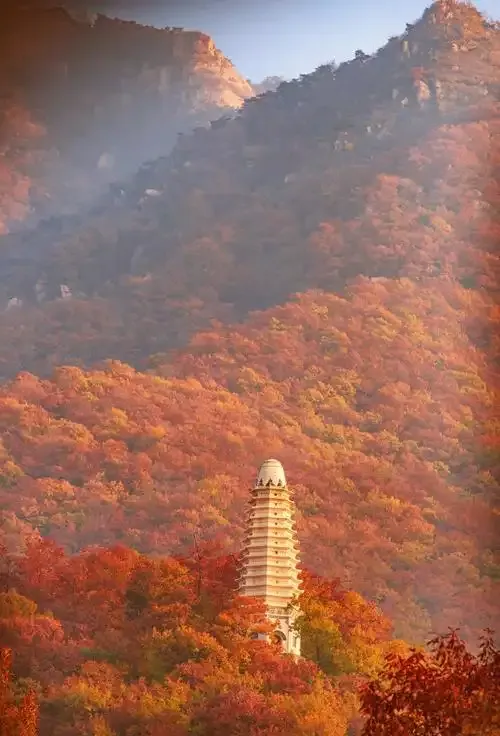
South Shaolin Kung Fu: The Cunning of the Alleyway
Now, picture yourself in coastal Fujian. It's all mountains, rice terraces, and narrow village streets. An enemy is right in front of you. There's no room to wind up a big kick. What do you do?
You fight like the South.
The Philosophy: "One Inch Short, One Inch Deadly"
This Southern saying says it all: "Yī cùn duǎn, yī cùn xiǎn." (一寸短,一寸险). It means that in close quarters, shorter, more explosive movements are more dangerous.
- Bridge the gap. Get in close, fast.
- Stay rooted. Low, solid stances are your anchor.
- Overwhelm them. Use a barrage of hand techniques.
The Style in Action: The Fist is King
Southern Shaolin is the undisputed origin of the "Southern Fist" (南拳 - Nán Quán) tradition. It’s famous for its explosive, close-quarters power.
- The Secret Sauce: "Cun Jin" (寸劲) - Inch Power. This is the ability to generate devastating power over just a few inches. No big wind-up. Just a sudden, shocking burst of force from a short distance. It's what makes Southern styles so devastating in a phone booth.
- Low Stances, High Guard: They practice with incredibly low, stable stances (like the "horse stance") that are almost impossible to knock over. This provides a solid base to launch those powerful fist techniques.
- The Legacy: The Styles You Know. Southern Shaolin is the grandfather of some of the world's most famous kung fu:
Hung Gar: Powerful, rooted, with strong arm and leg movements.
Wing Chun: Efficient, direct, and designed for close-quarters combat. (Yes, the style Bruce Lee started with!).
Choi Lei Fut: A blend of Northern and Southern, known for its powerful, flowing movements.
Here’s a Tai Chi Wuji insight: This Southern principle of "inch power" is deeply connected to internal energy, or Jin. It’s not about muscle; it’s about coordinating your body and breath to release power efficiently.
It’s a refined skill that takes years to master, and it’s a core concept we explore in all our practices, from the softest Tai Chi push to the hardest Southern fist.
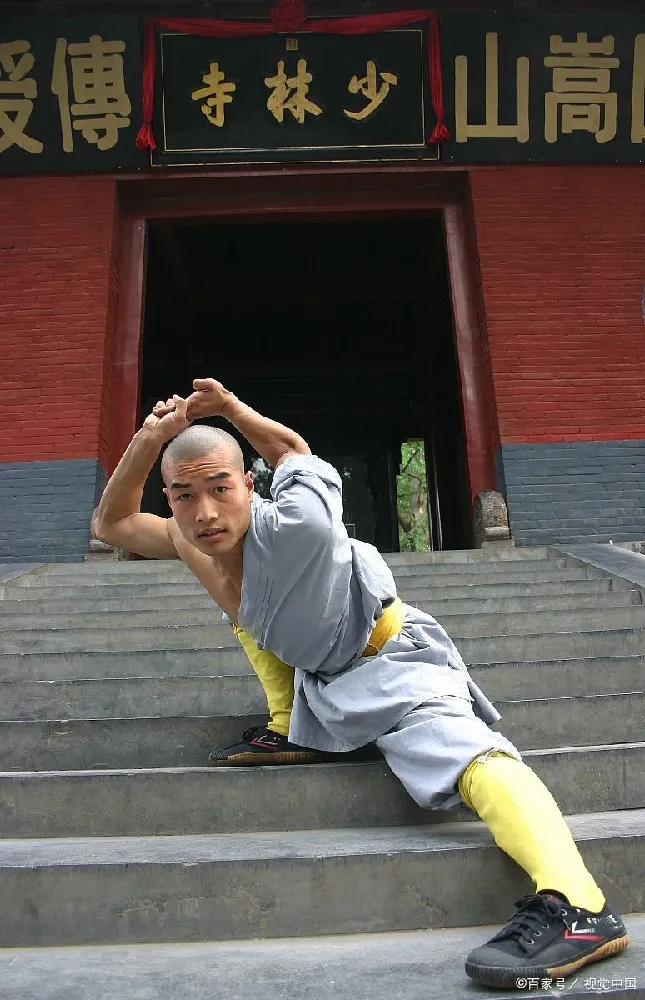
The Clash & The Blend: A Kung Fu Family Reunion
So, which is better? It's the wrong question. It's like asking if a hammer is better than a scalpel. It depends on the job.
The real beauty? They didn't exist in a vacuum. There was always cross-pollination.
A Quick-Reference Guide:
| Dimension | North Shaolin | South Shaolin |
|---|---|---|
| Terrain | Open plains, fields | Mountains, forests, narrow streets |
| Key Feature | Legs & Long-Range | Fists & Close-Range |
| Stance | Higher, more mobile | Very low, deeply rooted |
| Power Generation | Large, sweeping motions | Short, explosive "Inch Power" |
| Famous For | Tan Tui (Springing Leg), Staff | Hung Gar, Wing Chun, Choi Lei Fut |
History even records a famous general, Yu Dayou, who trained with Southern Shaolin monks to learn their effective anti-pirate techniques. He then took those ideas back north, influencing Northern martial arts manuals.
This proves a point we hold dear at Tai Chi Wuji: the best martial artists are adaptable. They understand the principles behind the techniques. Knowing both the long-range power of the North and the close-quarters cunning of the South makes you a more complete practitioner.
In our final section, we'll bring this ancient story into the 21st century. How do these two legendary traditions live on today? And what can they teach us about culture, preservation, and our own personal growth?
From Ancient Temples to Your Living Room: The Living Shaolin Legacy
History is cool. But what does it all mean for us, right now?
The incredible thing about the Shaolin legacy is that it's not a museum piece. It's a living, breathing, and adapting culture. The same spirit that guided monks on the battlefields of ancient China now guides people in gyms, parks, and homes all over the world.
The journey of North and South Shaolin is a masterclass in resilience. It shows how a tradition can stay true to its roots while evolving to meet new challenges. So, let's talk about the present—and the future.
North Shaolin Today: The Global Ambassador
The North Shaolin Temple at Songshan is a superstar. After the 1982 movie Shaolin Temple starring Jet Li, it became a global phenomenon.
What's It Like Now?
- A Cultural Powerhouse: It's a UNESCO World Heritage Site and a massive tourist destination. You can watch breathtaking kung fu performances by the resident monk disciples.
- The Daily Grind: Behind the scenes, a monk's life is still incredibly disciplined. It starts before sunrise. Think 30 minutes of silent Zen meditation to calm the mind, followed by hours of grueling physical training. They hold deep stances until their legs burn. They practice kicks until the form is flawless. This is "Chan Wu Yi Ti" in action—every single day.
- Going Global: The Temple has opened schools worldwide. They face a modern challenge: how to translate ancient concepts for a global audience. How do you explain the feeling of "rooting" your energy in English? They're doing it, spreading the art while trying to keep its soul intact.
From our view at Tai Chi Wuji, this is a familiar tightrope walk. How do you share a deep, cultural practice without turning it into a commodity?
The North's approach is about scale and spectacle, which has its pros and cons.
It inspires millions, but the deepest lessons often require a quieter, more personal setting—which leads us to the South.
South Shaolin Today: The Grassroots Guardian
The Southern legacy took a different path. Without a single, iconic headquarters, its survival depended on the dedication of local communities and individual masters.
The Keepers of the Flame
- The Local Heroes: In Putian, you'll find inheritors like Lin Jianhua. His mission? To keep Southern Shaolin relevant. He took a complex 36-move fist form and carefully adapted it into an 18-move routine for local school kids. He's saving the essence—the explosive "inch power"—by making it accessible.
- Modern Problems, Southern Solutions: In Quanzhou, schools practicing Five Ancestor Fist (a Southern style) host public challenge matches. They've adapted the traditional "short-fist" techniques for modern sparring rings. They've proven that this 500-year-old art is still brutally effective.
- Real-World Self Defense: This is where Southern Fist truly shines today. Its focus on close-quarters combat makes it perfect for modern self-defense courses. Instructors are taking these techniques and teaching them to people, especially women, showing how to use palm strikes and elbow blows to escape a grab. The ancient art of the rebel monk is now a tool for personal safety.
This grassroots hustle is something we deeply respect at Tai Chi Wuji.
It mirrors how traditional Tai Chi has been kept alive—not always in big institutions, but in parks and community centers by passionate teachers.
The soul of the art lives in this personal transmission from teacher to student.
What Their Survival Teaches Us
The contrasting paths of North and South Shaolin offer powerful lessons for anyone interested in culture, history, or personal growth.
1. Preservation Isn't One-Size-Fits-All.
- The North shows the power of global branding and institutional support. This brings resources and attention that can safeguard a heritage.
- The South shows the power of local passion and adaptability. When a culture is woven into the fabric of a community, it becomes incredibly resilient.
2. "Chan Wu Yi Ti" is a Modern Life Hack.
You don't have to be a monk to get this. The principle is universal.
- The "Chan" (Zen): That's your mindfulness, your calm focus. It's the meditation you do for 5 minutes in the morning. It's taking a deep breath before a stressful meeting.
- The "Wu" (Martial): That's your action, your discipline. It's your workout. It's the courage to tackle a difficult project.
The magic happens when you combine them. A calm mind makes your actions more effective.
Disciplined action, in turn, makes your mind clearer and stronger. This is the ultimate gift of Shaolin—a framework for a balanced life.
Conclusion: Your Kung Fu Journey
So, the story of North and South Shaolin is more than a history lesson. It's an invitation.
It invites you to appreciate the sheer diversity within Chinese martial arts. It shows you that kung fu is a tree with countless branches, from the high-flying kicks of the North to the rooted, powerful fists of the South.
Whether you're drawn to the majestic history of the Songshan Temple or the rebellious, practical spirit of the Fujian masters, there is a path for you.
At its heart, this journey—whether through Shaolin kung fu or the internal art of Tai Chi—is about one thing: the ongoing discovery of your own potential. It’s about building a strong body and a peaceful mind, one step, one breath, one punch at a time. And that is a legacy worth practicing.
FAQ Section
What is the main difference between North and South Shaolin?
The core difference lies in their history and martial arts style. North Shaolin, centered at the Songshan Temple in Henan, is the official "ancestral temple" with a well-documented, imperial history. Its martial arts are characterized by "Grand Opening, Grand Closing" – powerful, long-range techniques, high kicks, and masterful staff work, epitomizing the "Northern Leg" (北腿) style. South Shaolin, located in Fujian province, is more shrouded in mystery with several candidate sites. Its style, a foundation of "Southern Fist" (南拳), focuses on low, solid stances, close-quarters combat, and explosive "short-power" (寸劲), optimized for mountainous and coastal terrain.
Did the Southern Shaolin Temple really exist?
Yes, modern scholarship overwhelmingly agrees that a Shaolin martial arts tradition existed in Fujian. While there is academic debate about its exact location (with strong candidates in Putian, Quanzhou, and Fuqing), historical records like the Ming History and archaeological finds (e.g., the "Shaolin Yuan" inscribed porcelain in Fuqing) confirm that Shaolin-style monk-soldiers were active in Fujian, particularly against Japanese pirates. The "Southern Shaolin" is best understood as a network of temples practicing this tradition, rather than one single, officially named temple.
Why is there controversy over the location of the Southern Shaolin?
The controversy stems from its destruction. The Southern Shaolin temples were famously purged and burned by the Qing Dynasty for their involvement in anti-Qing rebellions. This systematic destruction led to the loss of official records and direct evidence like stone inscriptions. The evidence we have today is largely archaeological (stone troughs, temple layouts) and from folk histories (genealogies, local records), which, while compelling, are open to interpretation. This makes pinpointing one definitive "true" site challenging for scholars.
What does "Chan Wu Yi Ti" (禅武一体) mean?
"Chan Wu Yi Ti" is the core philosophy of Shaolin, translating to "Chan and Martial Arts are One Unified Entity." It means that meditation (Chan) and martial arts training are not separate practices but two sides of the same coin. Chan cultivates a calm, focused, and disciplined mind, which is essential for effective and ethical martial arts practice. Conversely, the intense physical discipline of kung fu is seen as a form of moving meditation, a path to self-awareness and mastering one's own body and mind.
How can I experience North and South Shaolin today?
For North Shaolin: You can visit the Songshan Shaolin Temple in Dengfeng, Henan, to see the ancestral home, watch incredible kung fu performances by the monk disciples, and explore its surrounding martial arts schools. The rebuilt Jixian North Shaolin Temple in Tianjin offers a look into its imperial past and unique heritage. For South Shaolin: You can visit the rebuilt temples and cultural centers at the candidate sites. The Putian Southern Shaolin Temple hosts cultural events and martial arts displays. In Quanzhou, you can explore the temple and its connection to local Nan Quan styles like Five Ancestor Fist. These Southern sites offer a more grassroots, culturally immersive experience into the living martial arts traditions of Fujian.
